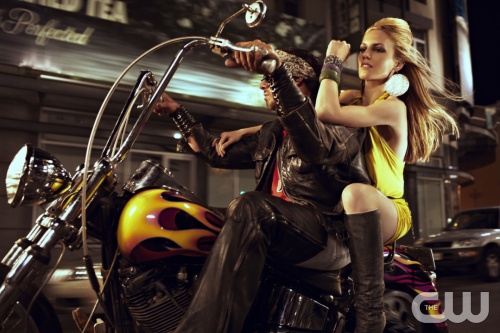Monday, October 31, 2011
A City of Sadness (Hou Hsiao-hsien, 1989)
But then, it's not really a true celebration of Taiwan's freedom. As characters note a few minutes later, the Japanese flags have been taken down and replaced with the old Chinese ones. The country still finds itself under the heel of another, venal Chinese bureaucrats replacing imperial Japanese forces. Not two years later, the Kuomintang government headed by Chiang Kai-shek would unleash a mass crackdown of growing Taiwanese dissidence in order to consolidate power over the Nationalist party's new homebase. During this vicious suppression, anywhere from 10,000 to 30,000 dissidents were killed and the KMT enacted a 40-year reign of martial law that would kill and imprison many more. Hou never bothers to make that coming storm a surprise, focusing instead on the sense of loss and voicelessness that categorizes Taiwan to this day.
In a typical practice of narrative focus, A City of Sadness condenses its large-scale historico-political subject matter by filtering it through the more personal prism of the Lin family, made up of four brothers. The eldest, Wen-heung, is the most optimistic about the end of Japanese rule, reconverting his bar into a restaurant he calls "Little Shanghai." But when gangsters from the real city come by demanding his cooperation, he learns soon enough that he isn't free. Two brothers got conscripted into the Japanese army, but only one, Wen Wen-leung, returned, albeit shellshocked into madness. When he recovers, he finds himself working for the same gangsters who pressure Wen-heung, unable to find work elsewhere. The youngest, Wen-ching (Tony Leung Chiu-wai), is deaf-mute, a sweet intellectual who operates a photography studio where grumbling young dissidents begin meeting before everything goes to hell.
Each represents some facet of Taiwanese response to liberation and subsequent re-enslavement, yet none exists solely as a symbol. But neither do the characters get much in the way of insight and depth of thought. Their presence grounds the emotional remove of the film with resonant hardships, also sidestepping any play for concrete objectivity by resolutely sticking with the brothers and their immediate families instead of capturing the full impact of the White Terror. By concentrating on what happens to these people, however, Hou can still address the actual events that ravaged the island. It's a hard approach to grasp, and it's telling that, as much as the film baffled Western critics not versed in Taiwan's history, it similarly vexed Taiwanese audiences.
Hou achieves his contradictorily historical and lyrical perspective through a singular use of camera movement and placement that uses geometric precision to create an antithetical sense of natural realism. He sets shots on an axis, returning to each area with shots in different positions along that same axis. For example, when he first moves inside the central set of the hospital, Hou situates the camera in the middle of the corridor looking out the door as Shizuko, a Japanese girl repatriated back to Japan following the war, asks for her nurse friend, Hinomi. Shortly thereafter, Hou returns to the axis but pulls the camera back into another room, still pointing out the hospital door but placing a second doorway to complete change the mood of the shot with only the slightest variance.
This style proves more confusing and challenging to Western viewers than its esoteric approach to lesser-known cultural history. The shots we assume to be chronological progressions are revealed belatedly to be simultaneous occurrences, and sometimes distinct areas become adjacent rooms in a larger set. For a film that situates itself in an intimate family setting, Hou's camera reverses the expectation of proximal shots and more psychological framing of sociopolitical response. If anything, the director moves further back the deeper the film plunges into its despair. No shot moves nearer to a character than medium-close-up, and any violence gets framed in long and extreme-long-shots, if not elided altogether.
Yet there is a poetic beauty at work here, with Hou's precise framing marking the progress of time outside clear dates. Mixing Ozu's static shots with Mizoguchi's elegant, long takes, Hou consistently clarifies and subsequently redefines spatial relationships in a playful but serious and perfectly judged way. And by returning to the same sets along the same axes, Hou creates visual motifs that instantly convey meaning through repetition. Several scenes occur at a dinner table in front of a stained-glass window with diamond shapes, and all of them feature some form of conflict. First, people mumble dissent over politics before being chided and distracted from their talk. Later, the Shanghai gangsters cow Wen-heung there. By showing intimate unrest throughout the film, the table symbolizes the massive conflict outside that window when Hou ends the film with a shot of no one sitting there. Furthermore, his method of visualizing the notes Wen-ching writes and receives to communicate recalls silent film intertitles, tying a film about cultural history to the history of the artform itself.
Wen-heung summarizes the film's theme even as his weary voice sets the tone when he bitterly sighs, "This island is in a bad way. First the Japanese, then the Chinese. They all exploit us and no one gives a damn." A sense of elegiac sorrow hangs over this film, and not only for the Taiwanese; Hou devotes some sad moments to the Japanese who grew up there during the 50-year rule forced to return to a still-smoldering motherland they wouldn't recognize even at its best. But Hou uses politics to move deeper into his story, presenting history, culture and personal recollection not into one homogenous whole but alternating between them until the ties that connect them are revealed. Hinomi, whose romance with Wen-ching leads to a marriage they won't be able to enjoy because of the regime crackdown, narrates the film.
Another director might have played up the irony of this, a Japanese woman speaking for a depiction of brutality upon the Taiwanese. Indeed, to some extent, Hou does suggest some commentary here, such as the scene where Hinomi diverts the political talk of others at the table by bidding Wen-ching to put on music he cannot hear to distract them. But Hou goes beyond using mere jabs, instead complicating the humanity, not the politics, of the film. She wanted a normal life too, and her flat, wistful narration proves no less haunting and resonant than the shot of an arrested Wen-ching staring blankly as he sits in a cell, unable to hear the sound of gunfire eliminating prisoners just outside the jail walls.
Something Evil's Lurking in the Dark
But let's remedy that situation. Here's a couple pictures from my weekend -
 |
| Me and the Yip-Yip Aliens! |
 |
| Paco y Pepe |
Jenna Petersen Interview + Excerpt

Les Diaboliques (Henri-Georges Clouzot, 1955)
But to define Clouzot by Hitch's standards is not only unfair but misleading. Where Hitchcock's technique-driven direction typically bypasses both narrative and character to grab the audience, Clouzot puts so much effort into retaining the plot of Boileau-Narcejac's novel that the film feels more like a proper mystery book, with its meticulous, follow-the-breadcrumbs pace daring to languish with extraneous scenes while still carefully building a mood. More so than the glissandi-spiked frights and deliberately jarring anti-narrative strokes of Psycho, Les diaboliques seizes the audience through a series of events so smoothly ordered that it's impossible to feel cheated even when the director rips out the carpet from underneath the audience.
Subtly, Clouzot never even allows for a moment's rest, even subverting the calm of the first few minutes by playing up the always glum setting of a boarding school. Horror is all about an exaggeration of anxieties, and the film traces this school back to the root of European education, Jean-Baptiste de la Salle, patron saint of teachers. In a cute joke, the married couple who head the school are the Delassalles. Christina (Clouzot's wife Véra), a frail wife whose heart condition seems to have preserved her in a false, perverse youth, actually owns the school. But it is her husband Michel (Paul Meurisse) who runs the school as principal, and he projects the financial insecurity of his wife's wealth into his behavior. Michel takes every opportunity to shame Christina, referring to her as his "little ruin" for her health issues. He so boisterously tears Christina down that his taunts have a way of silencing the school's rowdy boys but also shifting their attention squarely to the abused wife, as if attack dogs waiting for the order to strike.
Michel is misogyny on legs, so cruel he flaunts his mistress Nicole (Simone Signoret), another teacher, before everyone. Yet his repellent behavior is such that these two women actually bond over how much they hate him, with Nicole just as disgusted by his treatment of Christina as the wife herself. Signoret, with her limitless sensuality, here seduces the wife more than any man, ignoring the lecherous come-ons of the other teachers to woo Christina into doing something about Michel. This only further complicates the complex sexual dynamics of the film, which already aligns leering masculine presence against suffering females of different stripes. Nicole hatches a plan to kill Michel, the femme goading another woman into taking down a man rather than the usual inverse.
Clouzot progresses the plot from this point with a steady suction of light from the mise-en-scène and a gradual twisting of the frame. Everything slowly darkens as the two carry out their scheme and deal with the fallout, gradually dipping into inky voids so black that when light finally reenters the frame, it is only to spotlight a new shadow. Clouzot rarely uses music to punctuate a scene, letting the dread pile up from his gentle but ominous presentation of mostly static shots that tease failure at every turn. However, the shot of a sedated Michel being submerged in a bathtub to drown, or of the mild shock of his bloated face (complete with eyes rolled back into his skull) revealed as the women dump the body, wrings further chills by implicating the audience's desire to see him punished visualized in flat but gruesome terms. Furthermore, the flat pans and tracks that began the film pivot to angle everything, and objects such as stairs increasingly enter the frame add yet more visual madness as Christina starts to fall apart from guilt and fear.
Mordant irony plays a key role in the film as well. As Nicole runs the bath to drown the unconscious Michel, the tenants she earlier had to shake down for money now complain about the noise drowning out a radio contest. And as Michel's last breath bubbles out of him, the whinging man upstairs tells his wife he won't come to bed until they drain the tub because he cannot sleep with the noise. But later, he helps load the wicker basket containing Michel's corpse into Christina's car, oblivious that he's toting the reason for his minor inconvenience. When the women dump Michel's body into the school swimming pool hoping to make the murder look like an accident, the grim humor begins to align with the plot as his body subsequent disappears and clues stack up that he may be alive. Before long, Michel is darkly tormenting his wife more in "death" than in life. Christina, already terrified of being caught, soon has to deal with yet another thorn in the form of a retired detective who pities this woman who's "lost" her husband and also wants to feel like he can still figure out a case. The poor bastard found the one woman in France who couldn't want his help less.
To further connect the film to Hitchcock, the British director purportedly pursued the rights to the book and only just got beaten to the punch by Clouzot. But I can't help but feel Hitch, who largely left religion out of his work and even took Ed Gein's fanatical upbringing out of Norman Bates for Psycho, wouldn't have brought as much to Les diaboliques as Clouzot. French Catholicism hangs over this film, from the naming of the lead couple and school after a saint to the altar Christina keeps that subtly keeps triggering her guilt when she prays at it. Yet I wondered if that religion also didn't drive her to the murder in the first place, as it clearly forbids her from divorce. It also informs the patriarchal model in which the two women operate, creating a system of chauvinistic, repressed men who speak condescendingly and paternally to the same women they want to defile. Even the boys suffer from this, as heard in one brief aside where two schoolboys preparing for a trip home work out the final details for peeking in one of their sisters while bathing.
Even the film's twist plays into this critical view of misogyny, revealing an even larger scheme orchestrated by corrupting male forces to manipulate and even dispatch women. Clouzot does such a fine job of making Christina, for all her misdeeds and mounting paranoia, sympathetic that to see the tables cruelly turn on her provoked a complex mix of tragedy and just desserts. It also makes the terror that much more effective and, combined with some beautifully chill-inducing shots in the climax, manages to sustain the energy of a quicker jump scare over a longer period of time, drawing out the horror all the way through the best damn use of contact lenses ever put to film.
An omnipresent suggestion of surveillance hangs over the second half, which feels like the voyeuristic thrillers of Hitchcock and De Palma rooted solely on the perspective of the watched instead of the watcher. That makes the twist guessable but not obvious; more importantly, it makes the film rewatchable, not simply dropping a sudden break into the film but demonstrating its narrative cohesion through visual mastery of mood. That building aesthetic of constant reality shifts and a tragic sense of bewilderment would find its way in Hitchcock's subsequent adaptation of another Boileau-Narcejac book, his masterpiece Vertigo, the film so unlike what its director had done before yet so summarizing and fulfilling of all his traits. To see so much of that film, and Psycho, given its foundation made Les diaboliques a delight, but the film's true joys are self-contained and independent of the huge influence they had. It's easy to see why everyone, even the best, would crib from it, and Les diaboliques got under my skin as well as I'm sure it did for audiences in the mid-'50s, when it was one of the first foreign films to play outside the arthouse circuit in the English-speaking world.
Happy Halloween



Sange in coaie
Aseara la meciul Petrolul vs Steaua un ultras al gazdelor,Stefan Dragos Enache a intrat pe teren si l-a lovit din spate cu pumnul in tampla pe fundasul Stelei,Galamaz care nu a avut timp sa reactioneze si a cazut lat.
Imediat dupa ultrasul s-a intreptat in alergare spre grupul de stelisti.
Martinovici a fost primul care a reactionat si l-a atacat pe cretinul din PLoiesti.A incercat sa-i mute fata cu 2 lovituri de picior.Imediat portarul Stelei loveste si el ca Sandy Belle.Arbitrul ii elimina pe amandoi.
Ce vreau eu sa punctez este ca noi romanii suntem niste mamaligi.
O sa ma intrebati de ce?
Pai un coleg de-al lor ,roman,e trimis in lumea viselor si primul care reactioneaza e un jucator de nationalitate sarba?
Mereu am fost de parere ca omul isi arata adevarata fata in situatii de criza.Jucatorii romani ai Stelei se uitau lung.
Domnule Becali cand le mai platiti salariile un sfat va dau :Sa-i trimiteti sa-si cumpere cate o pereche de coaie.Se pare ca duc lipsa baieteii de la Steaua.
Respect Martinovici.
P.S. Neda Marinovic un istoric spune asa despre originea cuvantului sarb:In descrierea celui mai vechi popor din Balcani ,arata ca Sarb,in limba straveche indiana,sanscrita,din care au derivat toate limbile indoeuropene,intre care si limba sarba,semnifica pe omul liber,pe viteazul care lupta vesnic pentru propria supravietuire.
Sunday, October 30, 2011
Book I'm Most Thankful For

Instead of a book, I have a series. I am MOST THANKFUL for the House of Night series. If it wasn't for this book, I wouldn't have been able to get out of my heartbroken slump a year ago. This book helped me with healing my heart and falling in love with books so much more. Now I am an avid reader, I get to meet so many authors online and in person, and I get to chat with them given a chance.

I'm really happy that this series started it all for me. The first book, Marked, really got me hooked and I couldn't put it down since then. I had to keep reading, and even after I finished the latest in the series, I just had to find more and more books like it as well as explore other books that might not be similar to it.
So, that is the book series I am most thankful for. What book are YOU most thankful for? Let me know in the comments! :)
P.S.
Don't forget to enter my current giveaways. They are on the right sidebar :)
JOHN CARTER | Official Characters Descriptions
THE DARK KNIGHT RISES | Christian Bale, Joseph Gordon-Levitt NYC set photos
October RAK Wrap Up





Sara Brookes Interview + Free Reads (Must be 18 to Read)

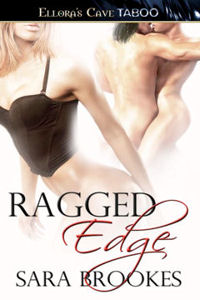

Saturday, October 29, 2011
CAREY MULLIGAN | Dragged into the underworld in “DRIVE”
THE LORAX | Stars voices of Danny DeVito, Zac Efron & Taylor Swift
A Rogue of my Own by Johanna Lindsey Review
 This book is so entertaining!
This book is so entertaining!Rupert is such an interesting rogue as well as a wonderful son. He loves to tease his mother "out of the goodness of [his] heart." He's adorably infuriating when he's around Rebecca and simply the most attractive man in her eyes.
Rebecca is a strong-willed and intelligent woman. She was raised with a tutor as opposed to going to one of those schools everyone goes to. She is very close to her mother and she has proper manners. Just don't provoke her and she will definitely not back down.
Rupert and Rebecca together is like a war. They constantly fight every chance they get to the point that it got so funny because Rupert was merely jesting, yet Rebecca was infuriated. I guess it comes with being pregnant. It was interesting that the book took place in a matter of about 2-3 months. I absolutely loved it and would love to read more books from Johanna Lindsey!
My favorite quotes/scenes:
"Aren't you the impatient one. You don't want to simply bask in my undivided attention? I'm wounded, 'deed I am."
"Enjoy every bite of that meal. It cost me five bloody pounds."
Rebecca: "You've already slept the entire day. Why not take over for Matthew now?"
Rupert: "You really think I could sleep with your eyes devouring me all day?"
((pause))
Rupert: "Get some sleep yourself. You'll need to be at your best tomorrow, too....And keep your eyes off my arse."
Rupert: "It's an appalling shortcoming of mine that I toss about so much in my sleep that I used to fall out of bed occasionally. Of course it never happens when I have a soft bedmate beside me, which tends to lure me in the direction of warmth even while I'm asleep. But since that isn't usually the case here, to keep from waking the rest of the family when I hit the floor, I've found this a safer position for my bed."
Rebecca: "You don't need to be that convincing! Save your seductive smiles for your legion of conquests. I won't be one of those, so a decent smile will do, thank you."
Rupert: "That WAS a normal smile, Becca. If you don't believe me, turn around and I'll show you the difference."
Rupert: "Damn. Have you been stuffing yourself with desserts just to prolong the suspense?"
Rebecca: You've found me out at last. I'm merely going to give birth to a pastry."
Rupert's mother Julie: "I see your taste is still beyond flamboyant. You're a bloody peacock, Rue."
Rupert: 'He actually looked behind him as he replied, "I thought I had my feather tucked away nicely."
Gossip Girl Season 5: Memoirs of an Invisible Dan
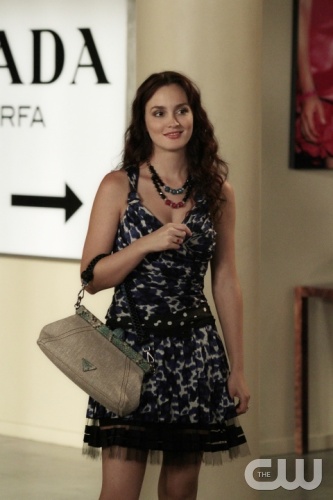
Poor Chuck, he's been depressed this season. I don't like him like that. I wish him and Blair would just get back together already. He looks so cute with a dog in his suit though!

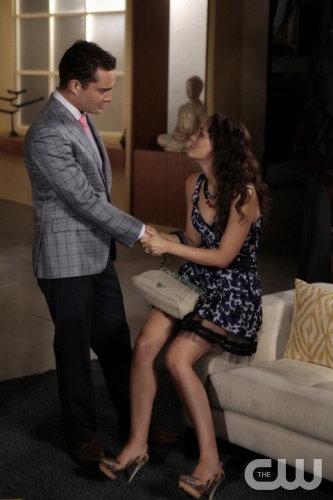
That yellow dress that Serena was wearing sure is not her color. Ever since she started working, her fashion sense seems to be becoming less than that of a socialite that she was. She's looking kind of washed out.

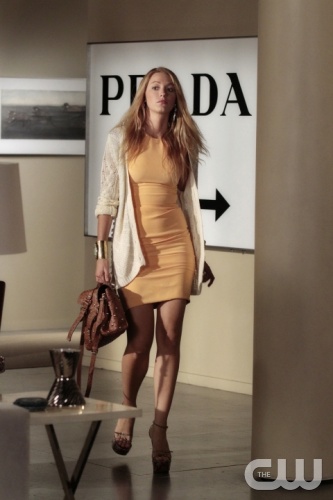


Tsk tsk Dan. It sucks that everybody thinks the book reflects his opinion of each character. Poor guy, he's all alone in the world now.
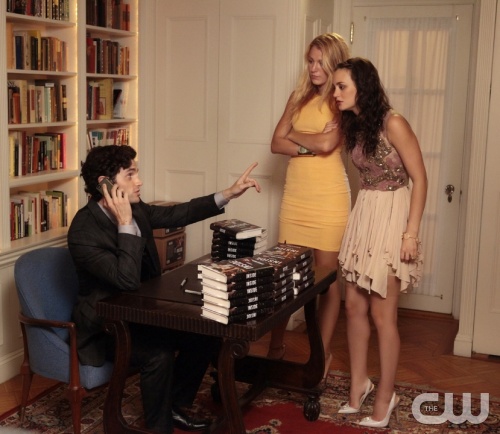
Diana & Nate - I hate this couple. As much as I hate Charlie/Ivy. They shouldn't even appear in any more scenes. Diana is so formal for some reason, everything she does is like... a commercial or something. I don't know.
Box office update: 'Puss in Boots' the cat's meow on Friday with $9.6 million
Coconut Oil helps Alzheimer's patients!
Important message from Neville 'Gladdy' Hoo: How worried should drug companies be about supplements eating into their monopoly profits? A lot, as this story will show. Please share it with anyone you know who is suffering from Alzheimer's or is worried about it.
Of course, just about everyone worries about Alzheimer's. It currently
afflicts 5.2 million people in the US and is the seventh leading cause of death. The cost of treating it is estimated at $148 billion. Mary Newport, MD, has been medical director of the neonatal intensive care unit at Spring Hill Regional Hospital in Florida since it opened in 2003.
About the same time the unit opened, her husband Steve, then 53, began
showing signs of progressive dementia, later diagnosed as Alzheimer's
Disease. Many days, often for several days in a row, he was in a fog; couldn't find a spoon or remember how to get water out of the refrigerator, she said.
They started him on Alzheimer's drugs--Aricept, Namenda, Exelon--but his
disease worsened steadily. (It should be noted that the latest research
shows that the various Alzheimer's drugs, like Aricept, have proven
disappointing, with little real benefit and often distressing side effects.) When Dr. Newport couldn't get her husband into a drug trial for a new Alzheimer's medication, she started researching the mechanism behind Alzheimer's. She discovered that with Alzheimer's disease, certain brain cells may have difficulty utilizing glucose (made from the carbohydrates we
eat), the brain's principal source of energy. Without fuel, these precious
neurons may begin to die. There is an alternative energy source for brain
cell fats known as ketones. If deprived of carbohydrates, the body produces ketones naturally.
But this is the hard way to do it; who wants to cut carbohydrates out of
the diet completely? Another way to produce ketones is by consuming oils that have medium-chain triglycerides. When MCT oil is digested, the liver
converts it into ketones. In the first few weeks of life, ketones provide about 25 percent of the energy newborn babies need to survive.
Dr. Newport learned that the ingredient in the drug trial which was showing
so much promise was simply MCT oil derived from coconut oil or palm kernel
oil, and that a dose of 20 grams (about 20 ml or 4 teaspoons) was used to
produce these results. When MCT oil is metabolized, the ketones which the body creates may, according to the latest research, not only protect against the incidence of Alzheimer's, but may actually reverse it. Moreover, this is also a potential treatment for Parkinson's disease,Huntington's disease, multiple sclerosis and amyotrophic lateral sclerosis. (ALS or Lou Gehrig's disease), drug-resistant epilepsy, brittle type I diabetes, and type II (insulin-resistant) diabetes.
So Mr. Newport, not being able to get into the drug trial, started taking
the coconut oil twice a day. At this point, he could barely remember how to
draw a clock. Two weeks after adding coconut oil to his diet, his drawing
improved.
After 37 days, Steve's drawing gained even more clarity. The oil seemed to lift the fog, and in the first sixty days, Dr. Newport saw remarkable changes in him: every morning he was alert and happy, talkative, making jokes. His gait was still a little weird, but his tremor was no longer very noticeable. He was able to concentrate on things that he wanted to do around the house and in the yard and stay on task, whereas before coconut oil he was easily distracted and rarely accomplished anything unless he was directly supervised.
Over the next year, the dementia continued to reverse itself: he is able to
run again, his reading comprehension has improved dramatically, and his short-term memory is improving; he often brings up events that happened
days to weeks earlier and relays telephone conversations with accurate
detail. A recent MRI shows that the brain atrophy has been completely
halted.
Let's take a moment to consider what actually happened here. Synthetic
(patentable) Alzheimer's drugs have failed. A drug company reluctantly
decides to put a non-patentable natural substance (medium-chain
triglycerides derived from coconut or palm) through an FDA trial. It works.
But, darn it, a smart doctor figures out that a natural food can be substituted for the super-expensive drug.
Not only that, the ketones from natural coconut oil last in the body longer than the drug version--eight hours instead of three hours. This is enough to make a drug company start worrying about its future. What if this natural health idea really catches on? Goodbye to monopoly profits!
Coconut oil can be found in many health food stores and even some grocery
stores. One large US chain sells a non-hydrogenated (no trans-fat) brand of
coconut oil in a one-liter size (nearly 32 ounces) for about US$7.
It can be purchased in quantities as small as a pint and up to five gallons online. It is important to use coconut oil that is non-hydrogenated and contains no trans-fat. We would also strongly encourage the use of virgin oil (chemicals used to extract non-virgin oil are potentially dangerous, and better still, virgin organic, still quite reasonably priced.)
For more information, see Dr. Newport's website. Sadly, you will not find any information on ketones, or the use of coconut oil or MCT oil, on the Alzheimer's Association website.
Coconut oil is not the only natural product that has the potential to turn Alzheimer's around. We will cover some other ones, and drug industry efforts to steal some of them, in a future issue.
http://www.coconutketones.com/biography.html
NB - Coconut oil is widely available in Jamaica's shops and supermarkets.
Rachel McAdams & Channing Tatum | 'The Vow' poster!
Michelle Williams | Marilyn Monroe approves of my movie
Friday, October 28, 2011
True Blood's STEPHEN MOYER | On his double jail time, True Blood’s camera tricks and the reason he won’t do a Rom-Com
America's Next Top Model All Star: Kathy Griffin
Kayla - so bummed she went home. But looking at her pictures this season, they do seem repetitive and one-dimensional. I still love her though.


Lisa - she did good this episode, and her photo shoot was great. I still think she has a trashy quality. But I'm proud of her for winning the challenge and having the best photo.
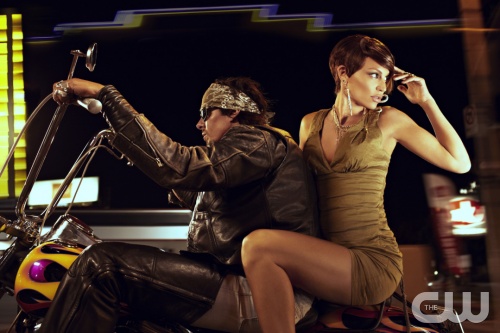
Bianca - big-headed. She thinks because she's pretty that she will be hired. Think again. I'm not sad that she went home at all. I do love it when she told Alexandria: "Call me when you become an all-star."

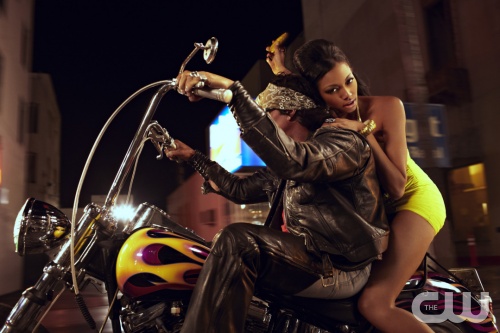
Alexandria - AMATEUR. She's lucky she's been surviving every stinking episode. I can't wait til she goes home.

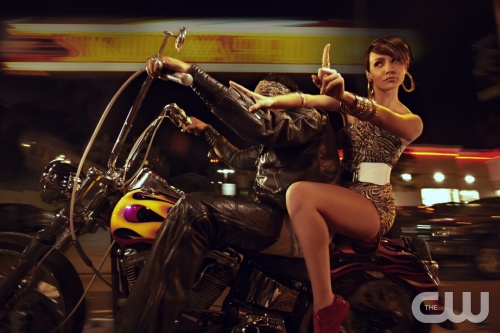
Allison - she is so cute! It's like she stepped out of a fairy tale book. I still think the judges love her and therefore sees her pictures as amazing.
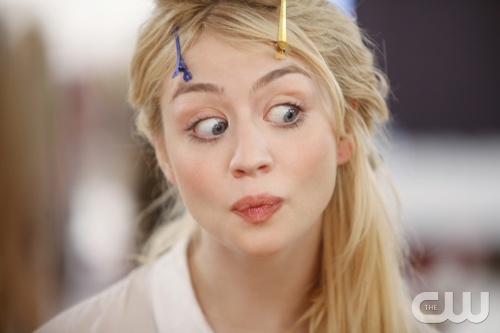

Dominique - she's quite forgettable maybe because she doesn't get in fights and doesn't appear in many scenes. But she's awesome and classy :)
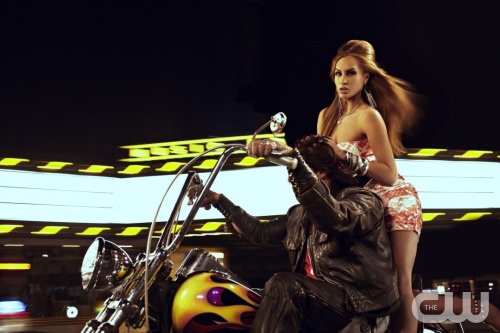
Angelea - the hood is definitely showing. Sorry, I'm not a fan. But glad that she did well in the photo shoot.
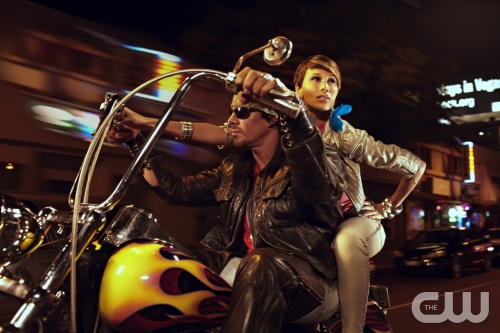
Laura - she's so cute! She was great in the photo shoot :) I'd definitely hire her.
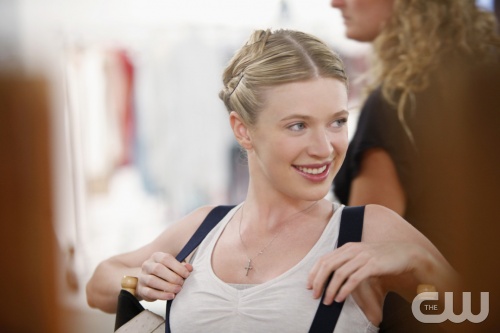
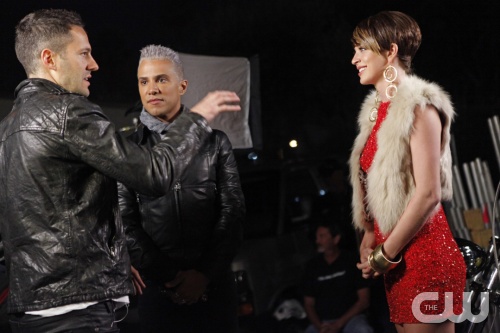
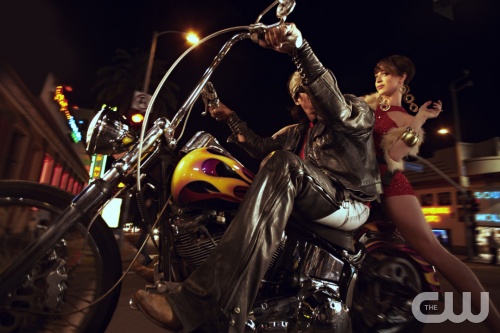
Shannon - I wanted her to go home. That goody-two-shoes act is SO OLD. I think she only got saved because of her bone structure.
